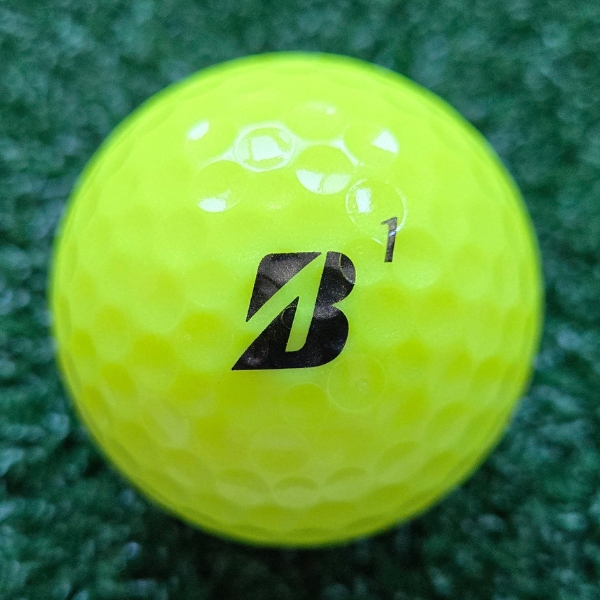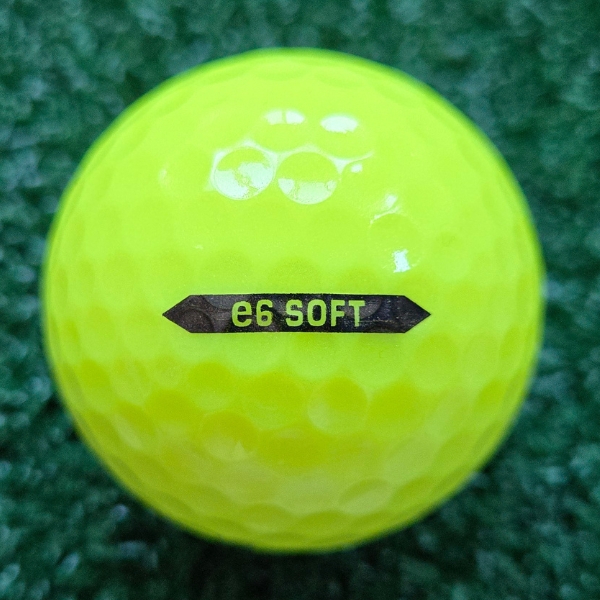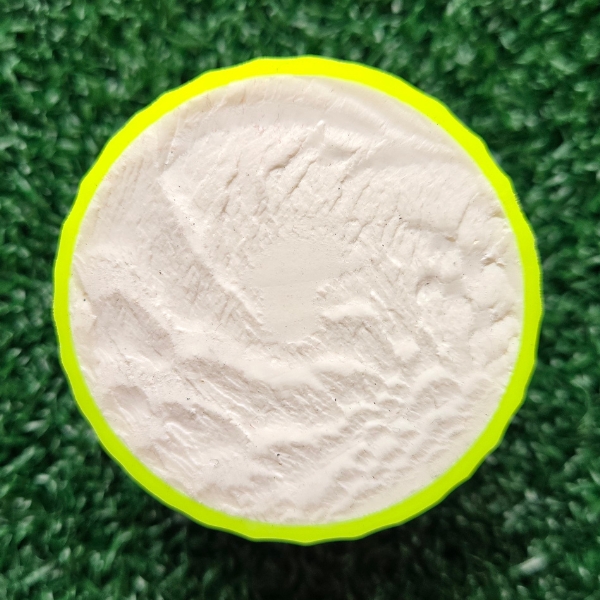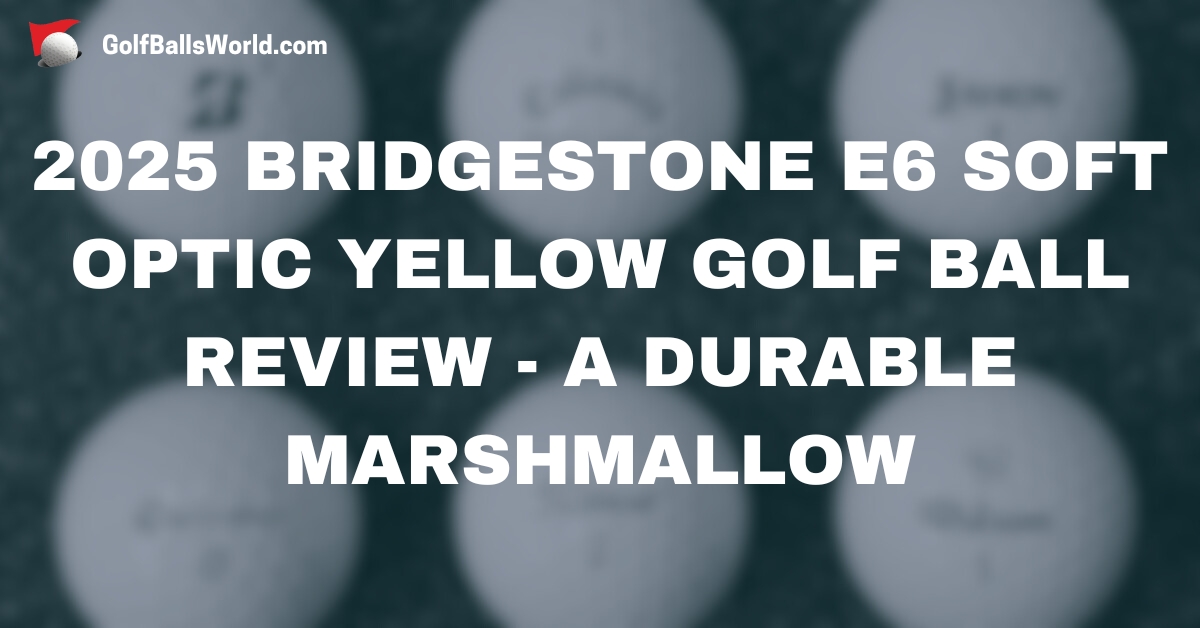The Bridgestone e6 Soft Optic Yellow was one of the first golf balls I ever reviewed. I admit, back then in 2021, I had limited knowledge compared to today. Don’t get me wrong, I still learn with every ball I try and review. Like everything in golf, it is an ongoing process. There are always new things to learn. Enough about me.
This ball has been one of Bridgestone’s most popular balls for a long time. Whenever a ball sees several variations and updates, something is working well.
As always, the emphasis is on the soft feel and long distance. You would like to hear something new, right? We know how golf ball brands advertise, so this is no surprise.

The first key point is a softer and larger core for faster compression and longer distance to start. Then there is the seamless cover for better spin and feel. From experience, this is one of those balls that instantly makes me think muted sound and marshmallow feel. With a reported compression rating of below 40, I don’t expect anything different. So, let me inform you how this Bridgestone best seller did on the course.
Who Is This Ball For?
More than anything, this ball is for golfers who like the marshmallow feel and the muted sound. Beginners and high handicappers would benefit the most from it. It is easy to get it higher in the air, and it goes a decent distance.
As usual for the e6 Soft model, I tested the optic yellow variation. That can work for anyone looking to add some fun and a relaxed feeling to a hard game. Plus, it can help players who might have depth perception issues. Colored golf balls can also be easier to track in flight and spot in the rough.
Its great durability, along with the reasonable price, can help your budget. Even when you lose one here and there, it won’t hurt your wallet as much. If you recognize yourself above, I would recommend that you try it. In case you have already played any of the older models, this one won’t disappoint you.
My Verdict
I reminded myself how hitting a brightly colored golf ball can get my mind off the seriousness when golfing. There is something about it I enjoy. Even for my regular ball of choice, which is currently the Titleist AVX, I am considering switching to the yellow variation.
Besides the color, this ball does not suit my style of play. It flies too high and does not produce enough spin. This ball is decent, and as I said above, I would recommend it to beginners or higher handicappers.
PROS
-
Beginner Friendly
-
Durability
-
Price
-
Soft Feel
CONS
-
Low Greenside and Short-Game Spin
-
Not Suited for Fast Swing Speeds
2025 Bridgestone e6 Soft Optic Yellow Golf Ball Review
Here’s a little transparency: This post contains affiliate links. If you click and make a purchase, I may receive a small commission. Don’t worry, there’s no extra cost to you. It’s a simple way you can support my mission to bring you quality content.
On the Green
I did not have the greatest putting experience. Obviously, that has nothing to do with the ball itself. I have missed a few putts within 3 feet, but that is golf. Other than that, the ball felt soft on long and short putts.
Long putts worked well, and all were ending in hole proximity. I hit it too softly on a few occasions, and the ball ended short of the hole. Overall, besides my bad putting day, the ball felt nice.
Around the Green
The lack of spin was evident no matter what kind of chip I executed. The further from the hole I was, the harder it was to find the right pace. Pretty much all shots ended in two ways, too long or too short from the hole.
It did feel soft on contact, and it was landing softly on higher chips. I had maybe one situation when the ball ended up within 3 feet of the hole. Honestly, all this did not surprise me as this type of ball generally lacks greenside spin.



Approach Shots
I test golf balls on a par 3 course, so every shot is an approach shot. This is a low-compressed golf ball, therefore, it should feel soft when struck. And it did, no surprise there. Although a couple of times I hit it lower on the clubface, it produced a clicky sound. The same happened when I hit it to lower the flight trajectory.
The shot dispersion was all right; I have hit either side of the green only a few times. Lower spin helped it to go fairly straight. I was able to reach my distances with no issue. It wasn’t the longest ball I tested, but it was long enough.
I have noticed how easy it was to launch this ball on a high flight trajectory. That was the only thing helping it to stop relatively quickly on the greens after landing. Like with chipping, the lack of spin was evident on approach shots as well.
Durability
I don’t have much to say here, except how impressed I was with its durability. It took me multiple looks at the ball to find any kind of scuffs or marks after a full round of golfing. At a glance, I could not see anything. Usually, I can spot at least a couple of spots with damage, but here it was a challenge to find them.
Whatever Bridgestone did, it has improved durability compared to the last two versions of this ball. I don’t know if it has anything to do with the optic yellow finish, but it works well.

Appearance and Price
If you read any of my Bridgestone golf balls reviews, you know I like how their logo looks on golf balls. So that, plus the optic yellow color, contributes to a very nice ball in this case. Also, it allowed me to spot the ball easily each time it ended in the rough.
Now on to the major change. Bridgestone went with a complete redesign of the putting alignment. They have ditched the one-direction arrow look with the e6 writing on the right-hand side. The new design is a two-way pointing line with the e6 Soft writing in the middle. I do like it, but it is a touch too short for my taste as someone who aligns balls on the green.
At $23.99, this ball is positioned close to all the main competitors. From big brand soft balls, only the Wilson Duo Soft comes cheaper. That being said, you could save some money in the long run and play a durable ball. It is available in white and optic yellow colors.

